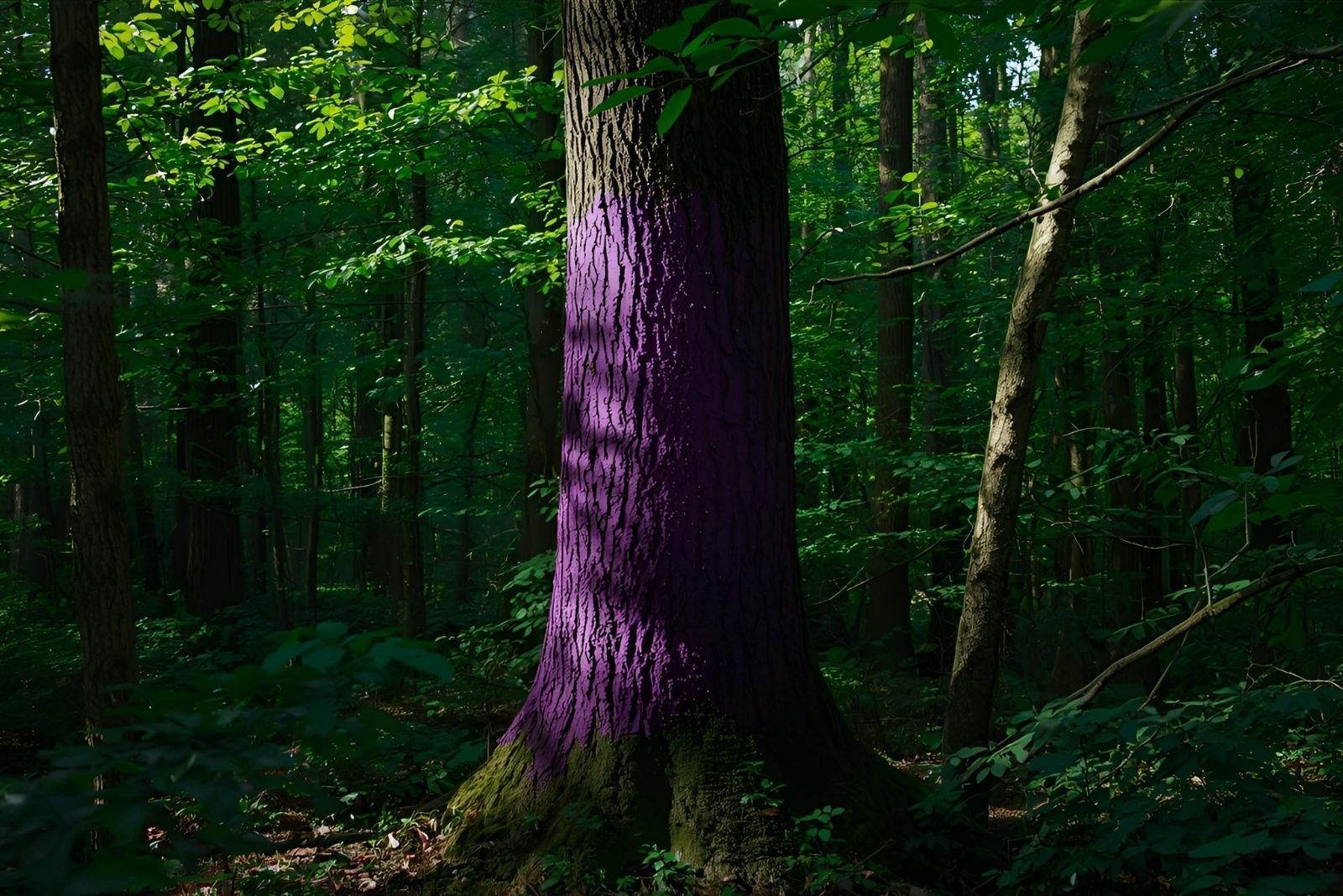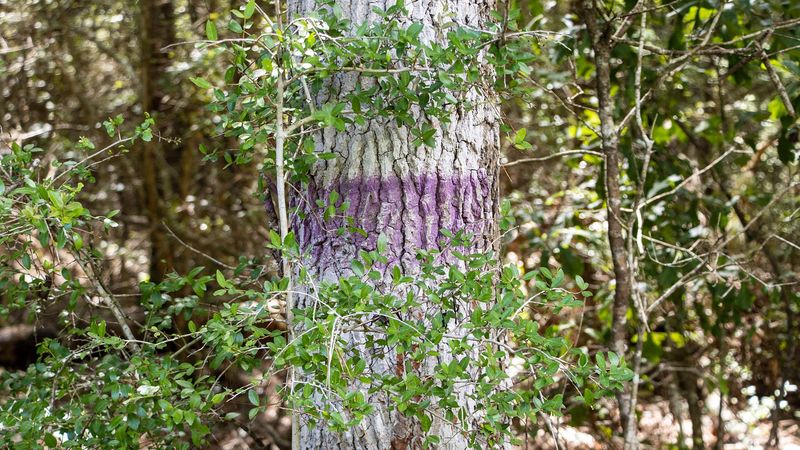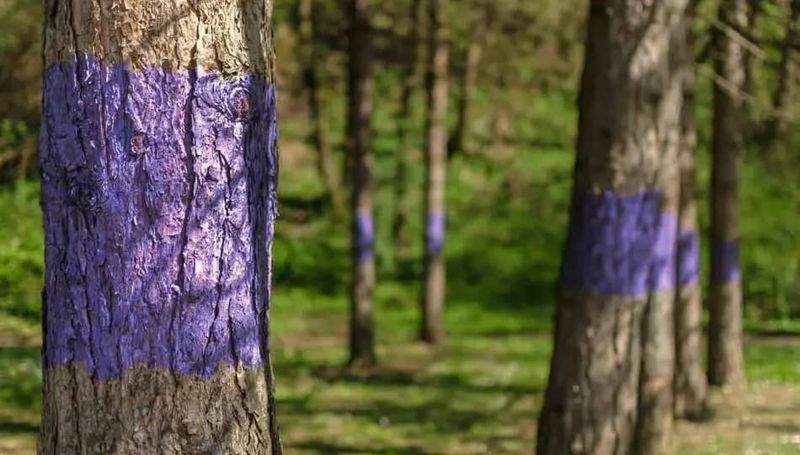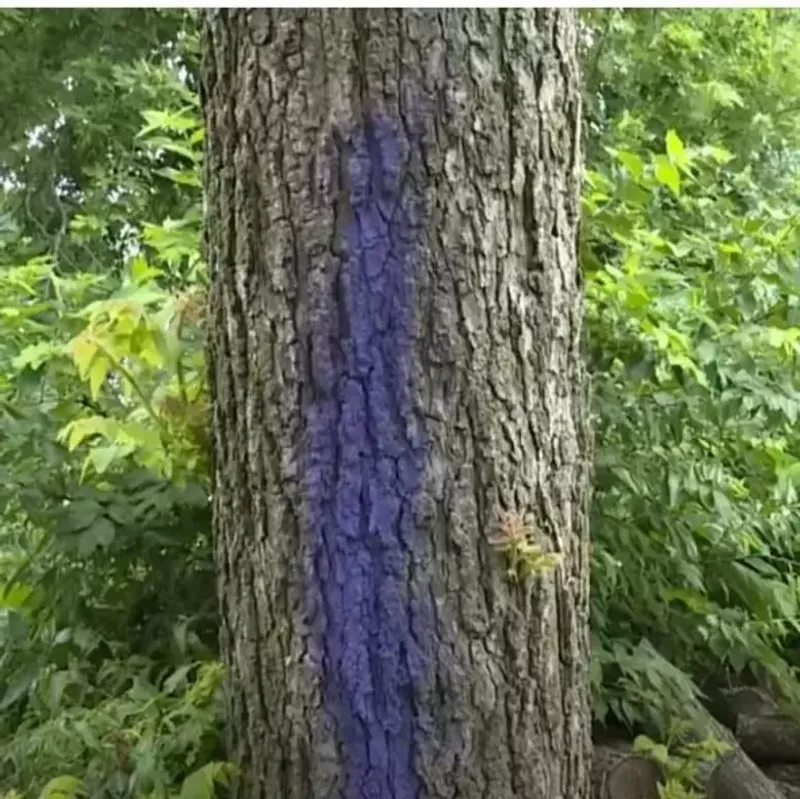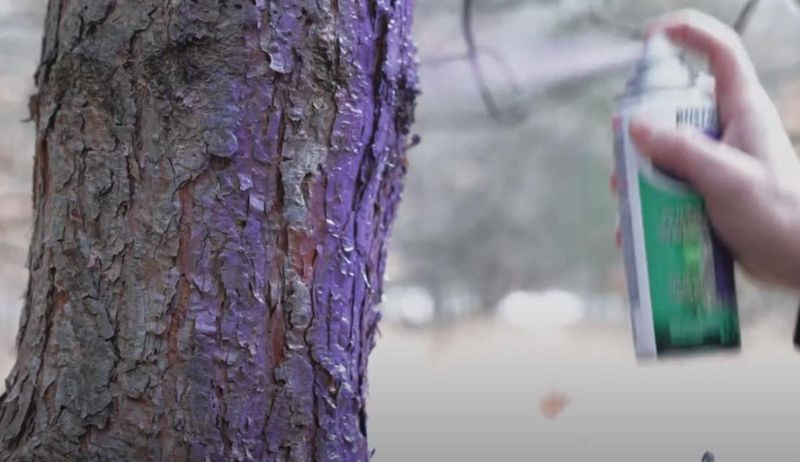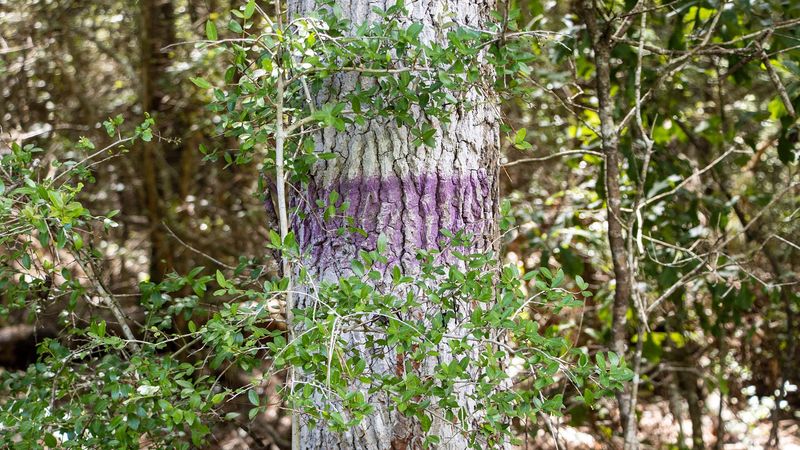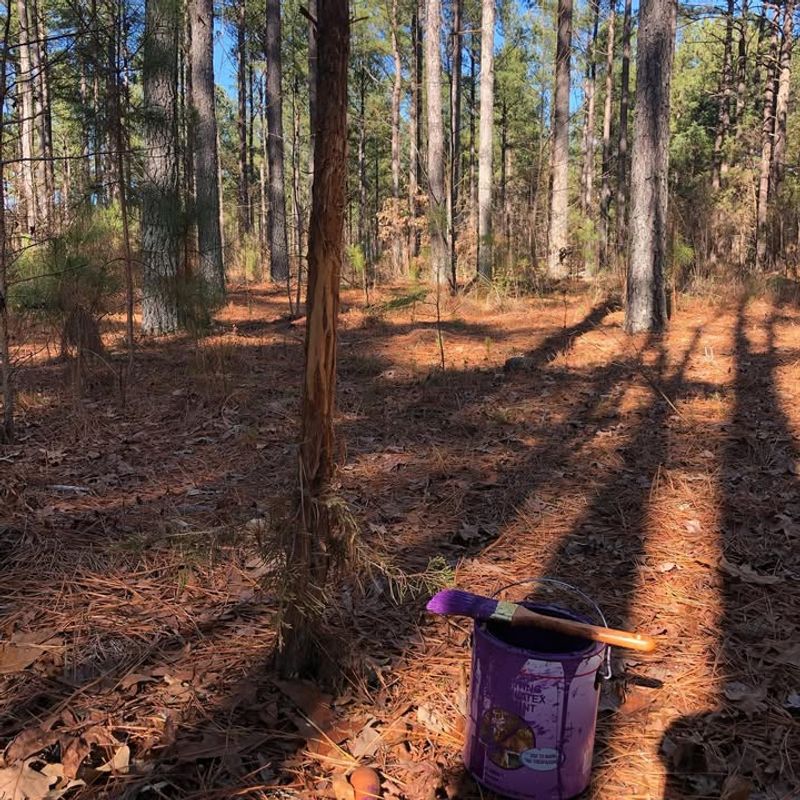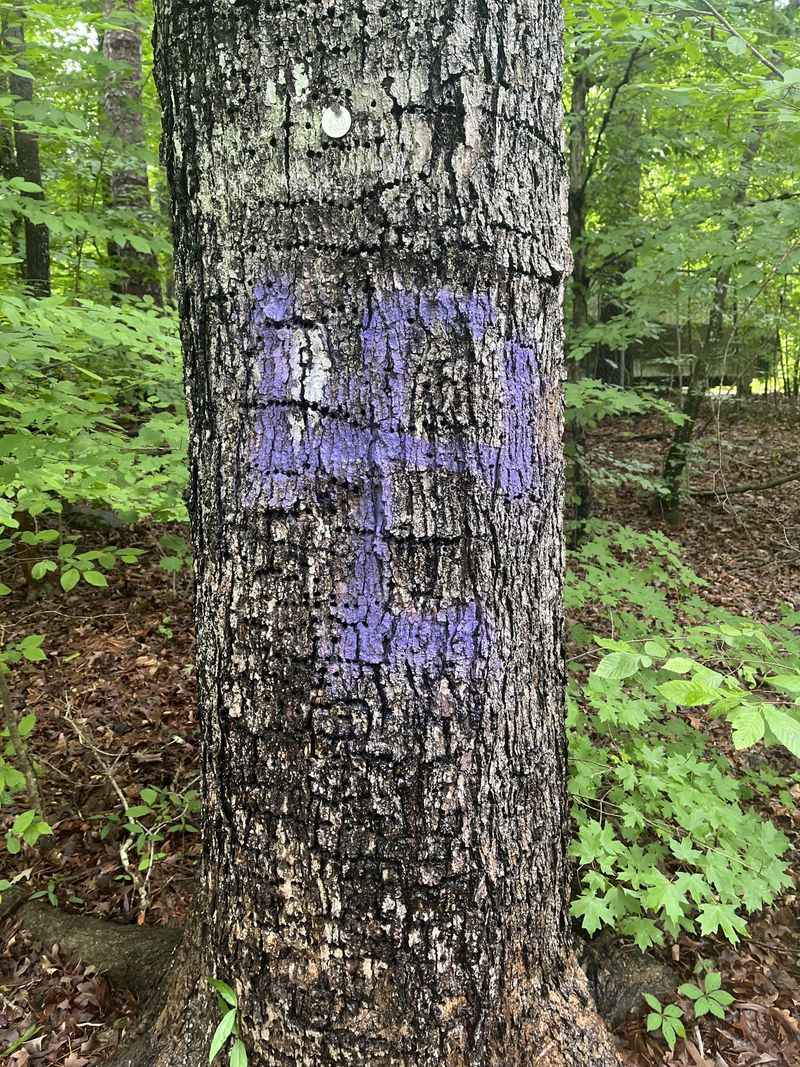If you’ve ever wandered through Maryland’s woods and spotted purple paint on tree trunks, you’re not alone. Those bright marks aren’t graffiti or a quirky art project—they mean something important.
In Maryland, purple paint is a legal way to mark private property boundaries. It’s a quiet but firm signal that says “no trespassing” without needing a posted sign.
For hikers, hunters, and nature lovers, knowing this code is key. It helps you respect landowners and stay safe while exploring the outdoors.
1. Legal No Trespassing Warning
Property owners in Maryland use purple paint as an official way to tell people to stay off their land. Instead of posting dozens of metal signs that rust and fall down, landowners can simply paint purple marks on trees around their property borders.
Maryland law recognizes these purple markings as legally binding no trespassing warnings. Anyone who ignores these painted boundaries can face the same penalties as ignoring traditional posted signs, including fines or criminal charges for trespassing.
2. Cheaper Than Traditional Signs
Buying and maintaining hundreds of no trespassing signs gets expensive really fast. Metal signs cost money, rust over time, and often get stolen or damaged by weather and vandals.
A single can of purple paint costs less than twenty dollars and can mark an entire property boundary. The paint lasts for years through rain, snow, and sun without needing replacement. Landowners save both time and money while still protecting their property legally and effectively.
3. Easier to Maintain Over Time
Keeping traditional signs readable requires constant attention and replacement work. Signs fade, get covered by growing vegetation, or disappear completely during storms.
Purple paint markings need only occasional touch-ups every few years. A landowner can walk the property line with a paint can and refresh faded marks in just a couple hours. No tools, no drilling, no wrestling with rusty nails or broken posts required for upkeep.
4. Follows the Purple Paint Law
Maryland adopted purple paint legislation to give landowners a simpler alternative to posting signs everywhere. The law specifies exactly how property owners must apply the paint to make it legally valid.
Marks must be vertical lines at least eight inches long and one inch wide, placed between three and five feet above the ground. They should appear on trees or posts no more than one hundred feet apart. Following these rules ensures the markings hold up in court.
5. Universal Symbol Hunters Recognize
Experienced hunters and outdoor enthusiasts across multiple states immediately understand what purple paint means. This color-coding system has spread throughout the eastern United States as an efficient boundary marker.
When hunters see purple marks, they know to turn around and find public land or get permission before proceeding. The bright color stands out even in dim forest light, preventing accidental trespassing. Education campaigns have made purple paint recognition standard knowledge among outdoor recreation communities.
6. Protects Wildlife Management Areas
Conservation groups and wildlife managers use purple paint to mark protected areas where human activity could harm sensitive ecosystems. These markings help keep people away from nesting grounds, migration corridors, and restoration projects.
Purple boundaries around wildlife areas prevent disturbance during critical breeding seasons. They also protect young forests recovering from logging or fire damage. Respecting these painted warnings helps Maryland’s deer, birds, and other creatures thrive without human interference disrupting their natural behaviors.
7. Prevents Accidental Liability Issues
Landowners worry about people getting hurt on their property and then facing lawsuits. Clear boundary markings help establish that someone knowingly trespassed rather than accidentally wandered onto private land.
Purple paint creates documented proof that warnings existed, which courts consider when determining liability. If someone ignores obvious purple markings and gets injured, owners have stronger legal protection. The painted boundaries essentially say you were warned, so any consequences fall on the trespasser’s shoulders.

